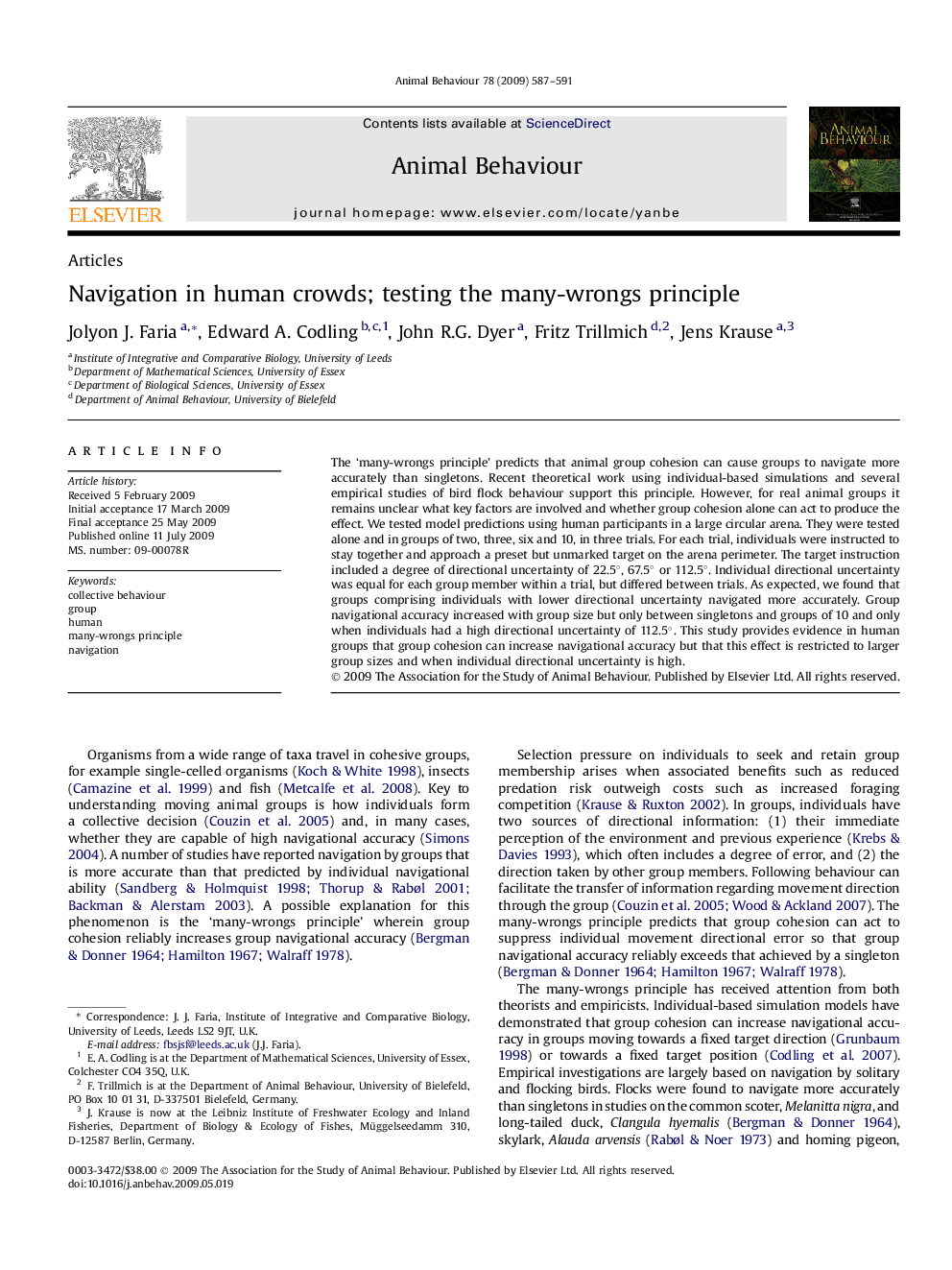| کد مقاله | کد نشریه | سال انتشار | مقاله انگلیسی | نسخه تمام متن |
|---|---|---|---|---|
| 2417320 | 1104316 | 2009 | 5 صفحه PDF | دانلود رایگان |

The ‘many-wrongs principle’ predicts that animal group cohesion can cause groups to navigate more accurately than singletons. Recent theoretical work using individual-based simulations and several empirical studies of bird flock behaviour support this principle. However, for real animal groups it remains unclear what key factors are involved and whether group cohesion alone can act to produce the effect. We tested model predictions using human participants in a large circular arena. They were tested alone and in groups of two, three, six and 10, in three trials. For each trial, individuals were instructed to stay together and approach a preset but unmarked target on the arena perimeter. The target instruction included a degree of directional uncertainty of 22.5°, 67.5° or 112.5°. Individual directional uncertainty was equal for each group member within a trial, but differed between trials. As expected, we found that groups comprising individuals with lower directional uncertainty navigated more accurately. Group navigational accuracy increased with group size but only between singletons and groups of 10 and only when individuals had a high directional uncertainty of 112.5°. This study provides evidence in human groups that group cohesion can increase navigational accuracy but that this effect is restricted to larger group sizes and when individual directional uncertainty is high.
Journal: Animal Behaviour - Volume 78, Issue 3, September 2009, Pages 587–591